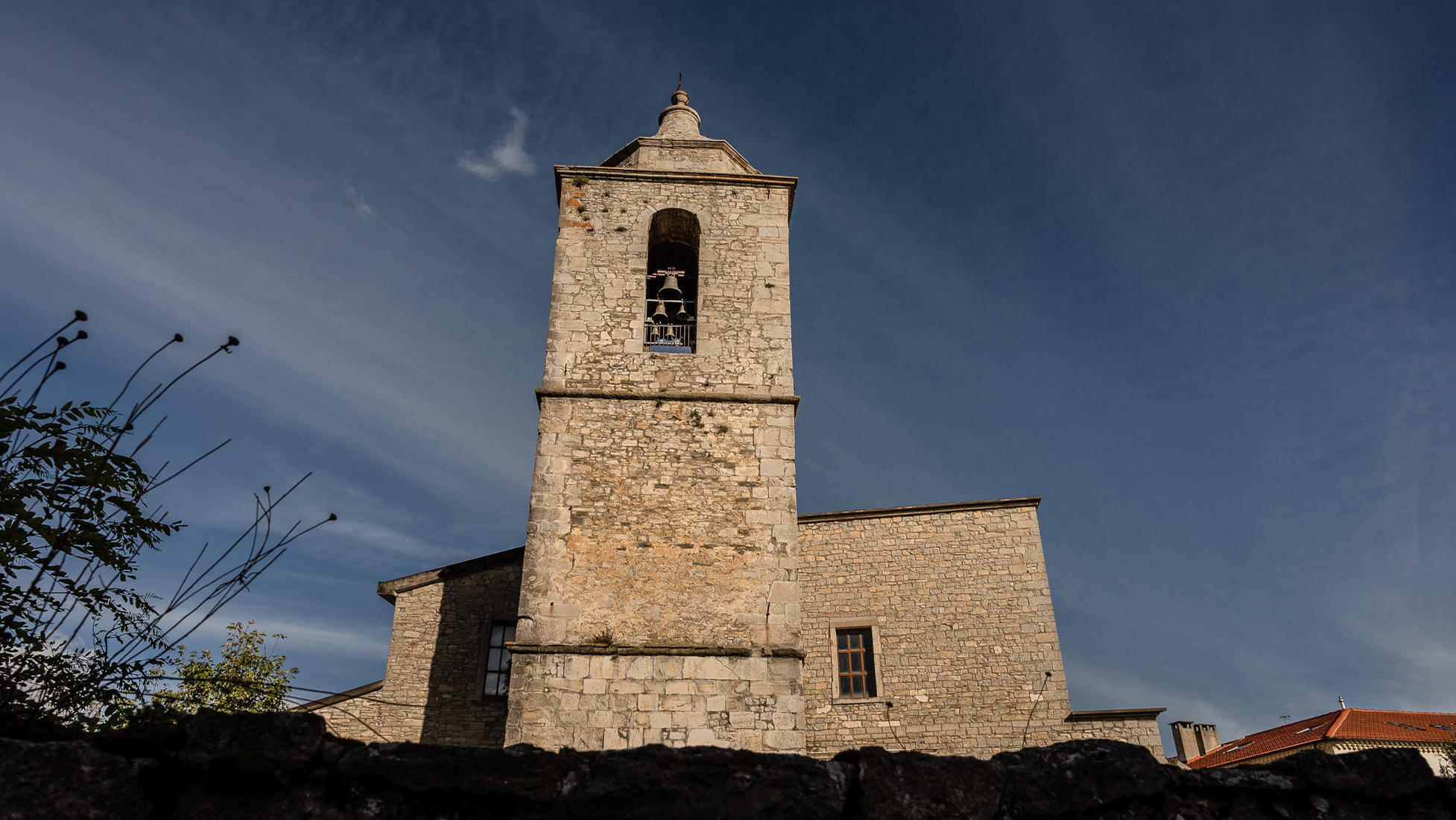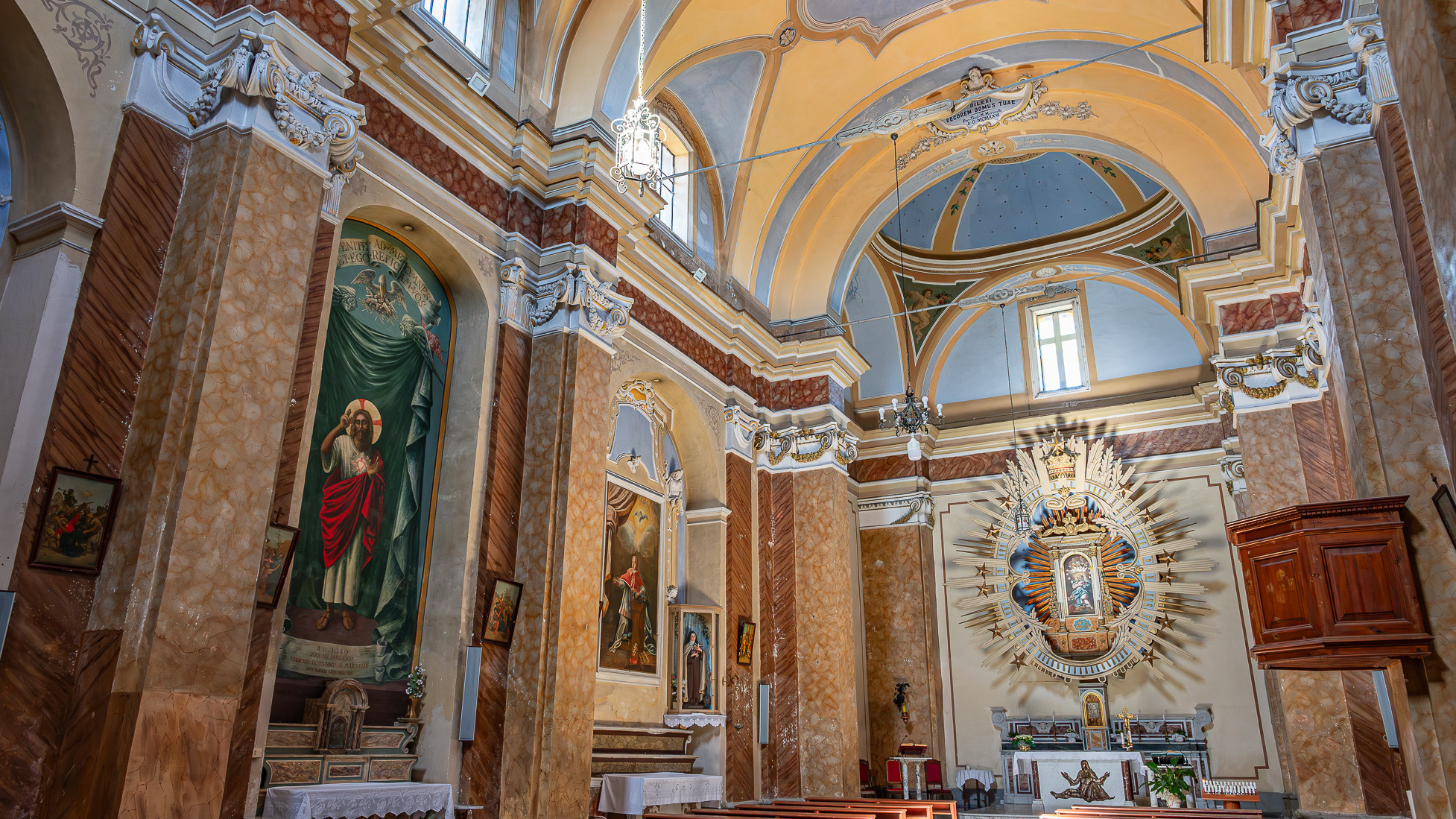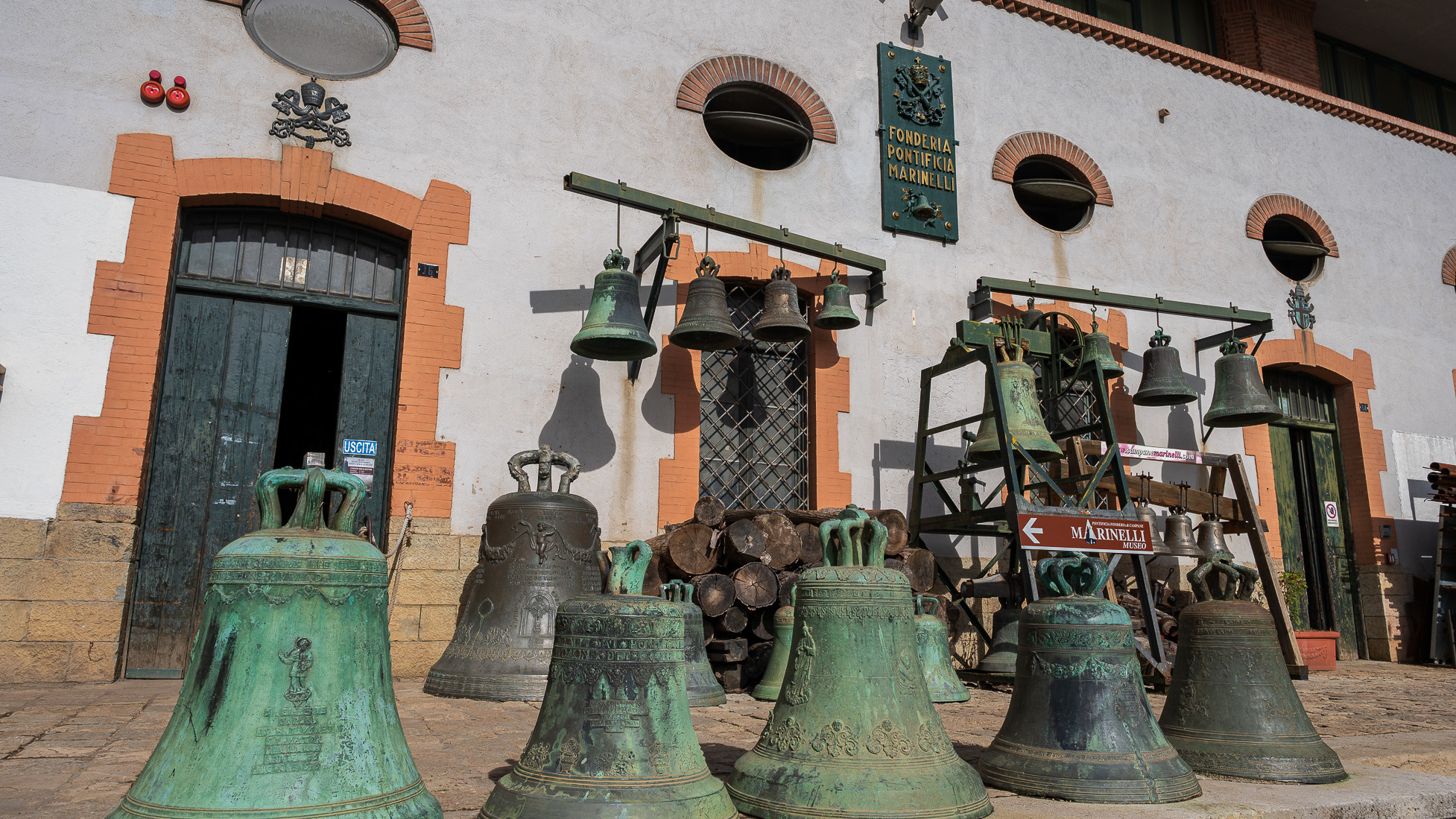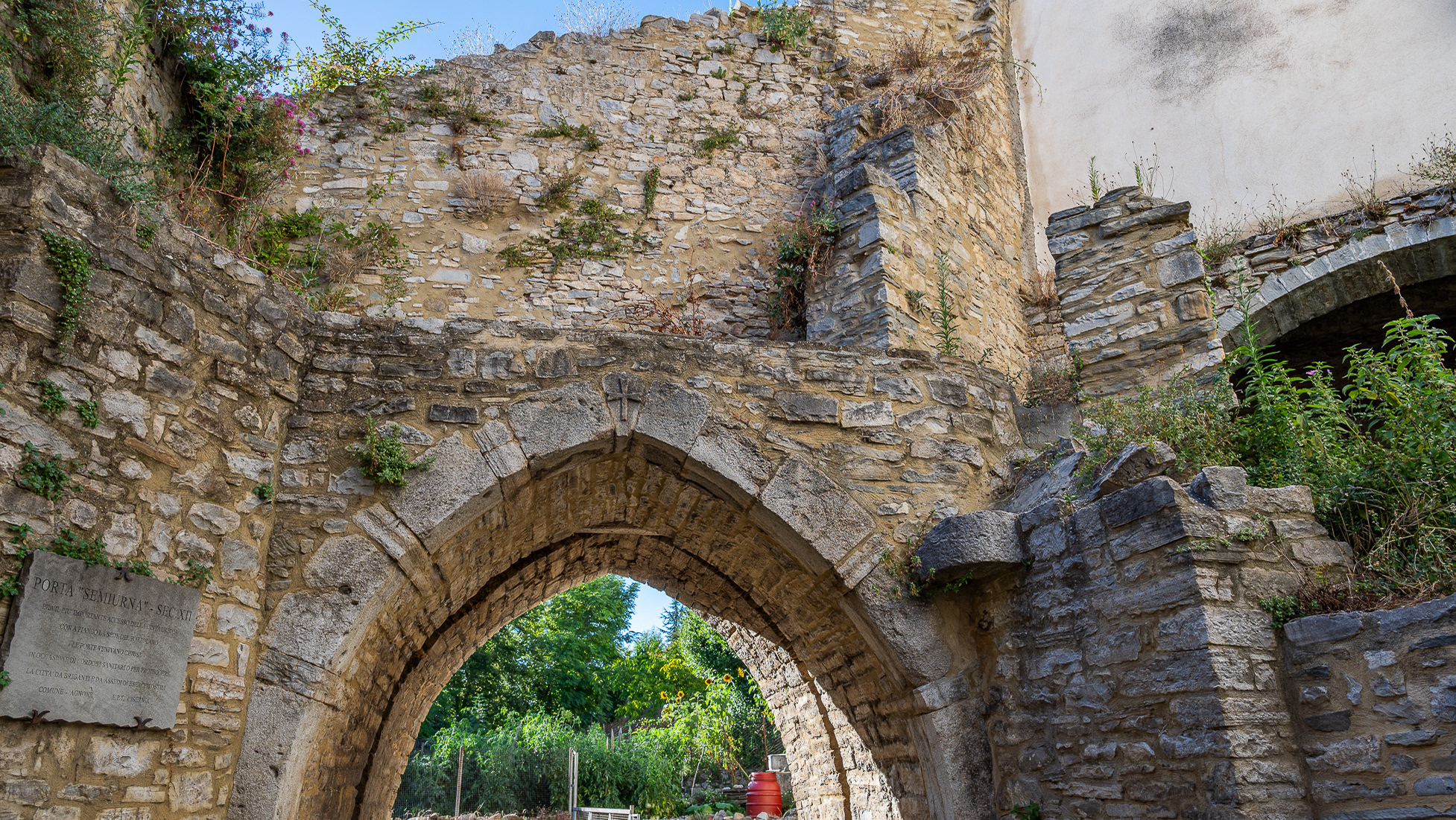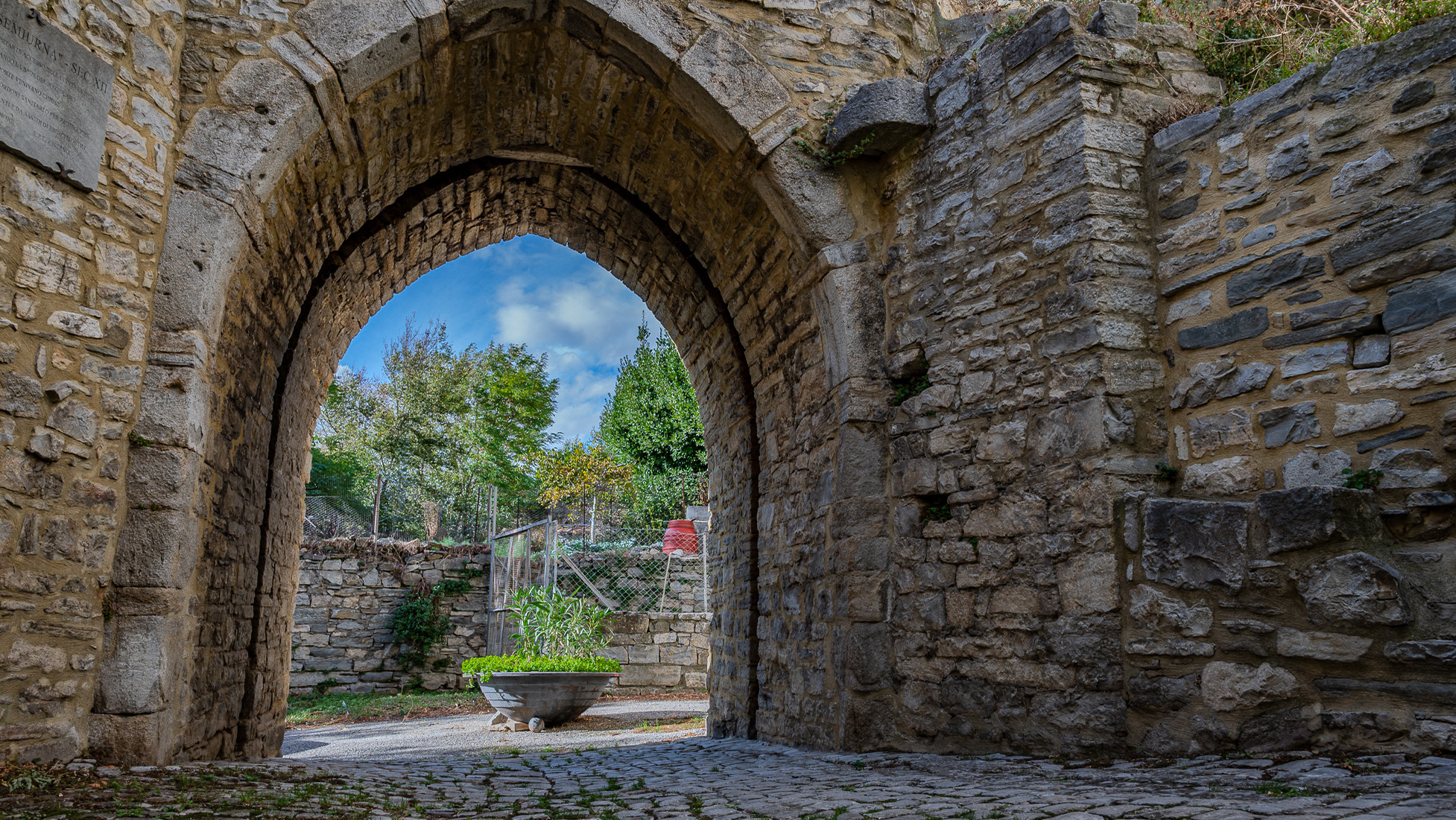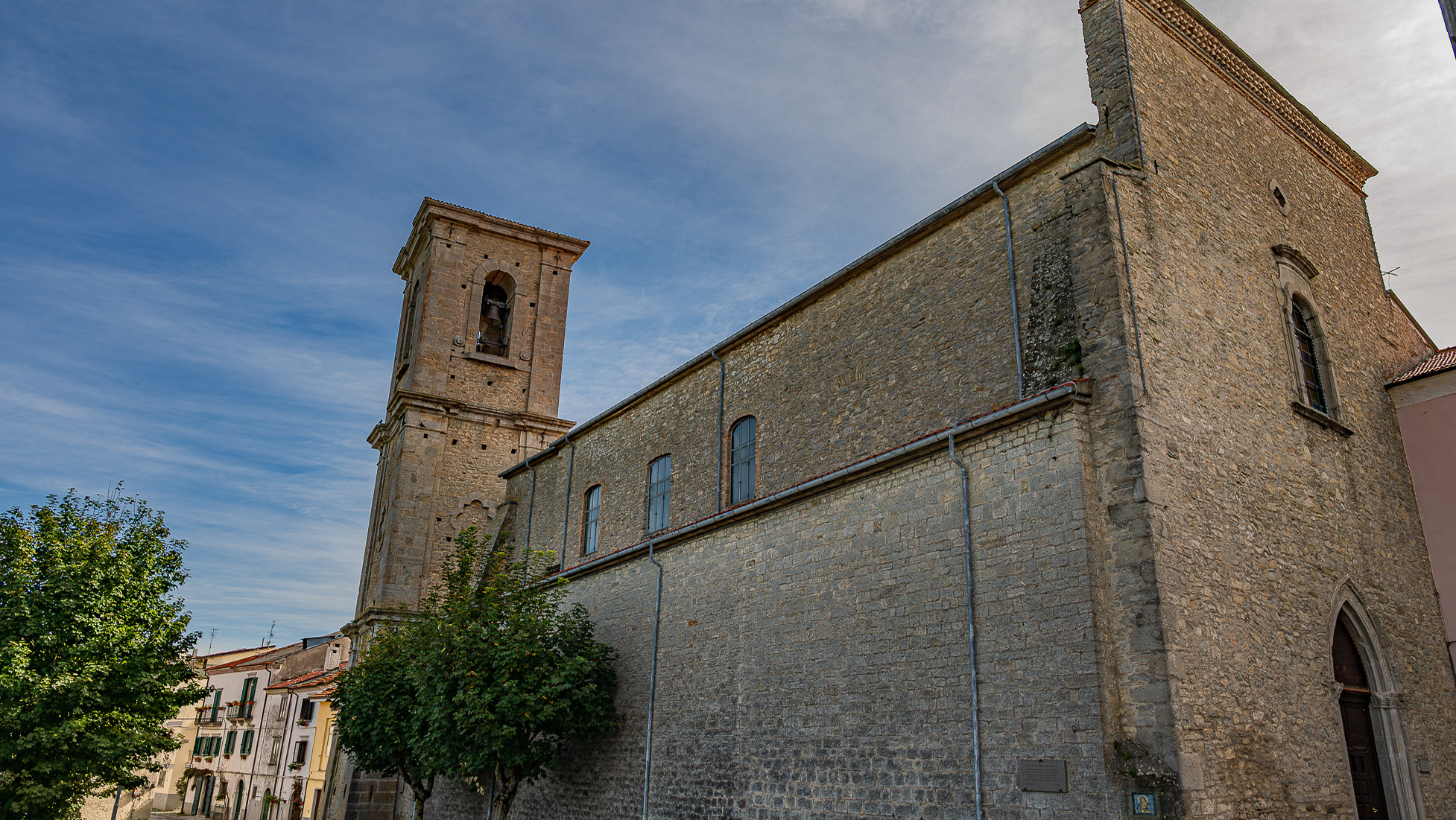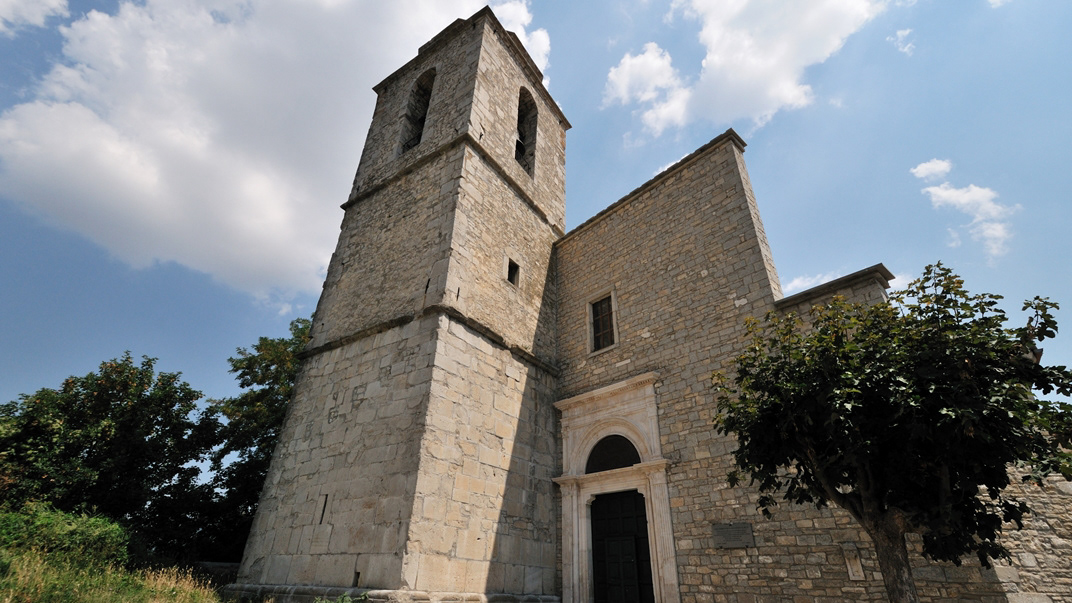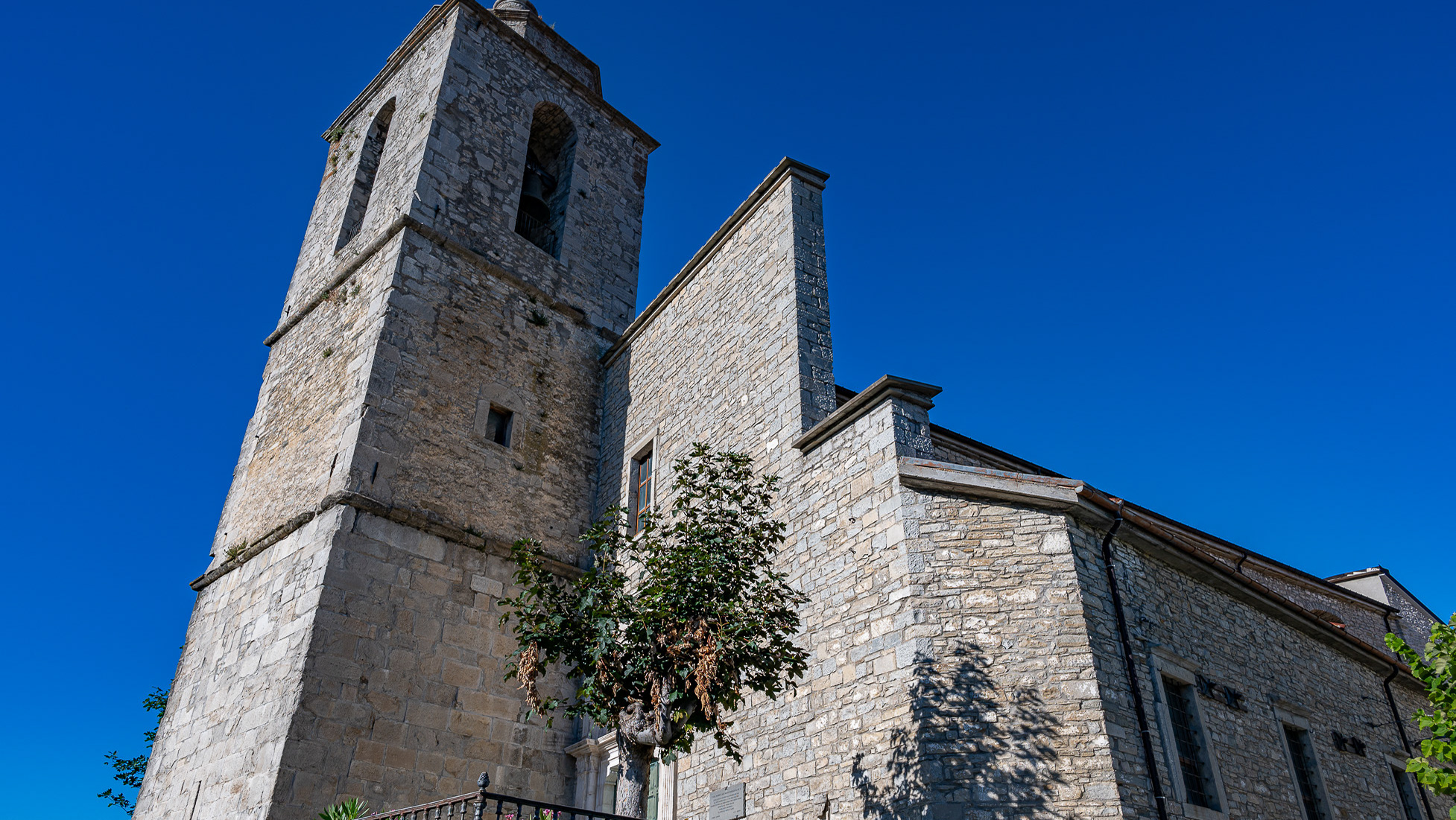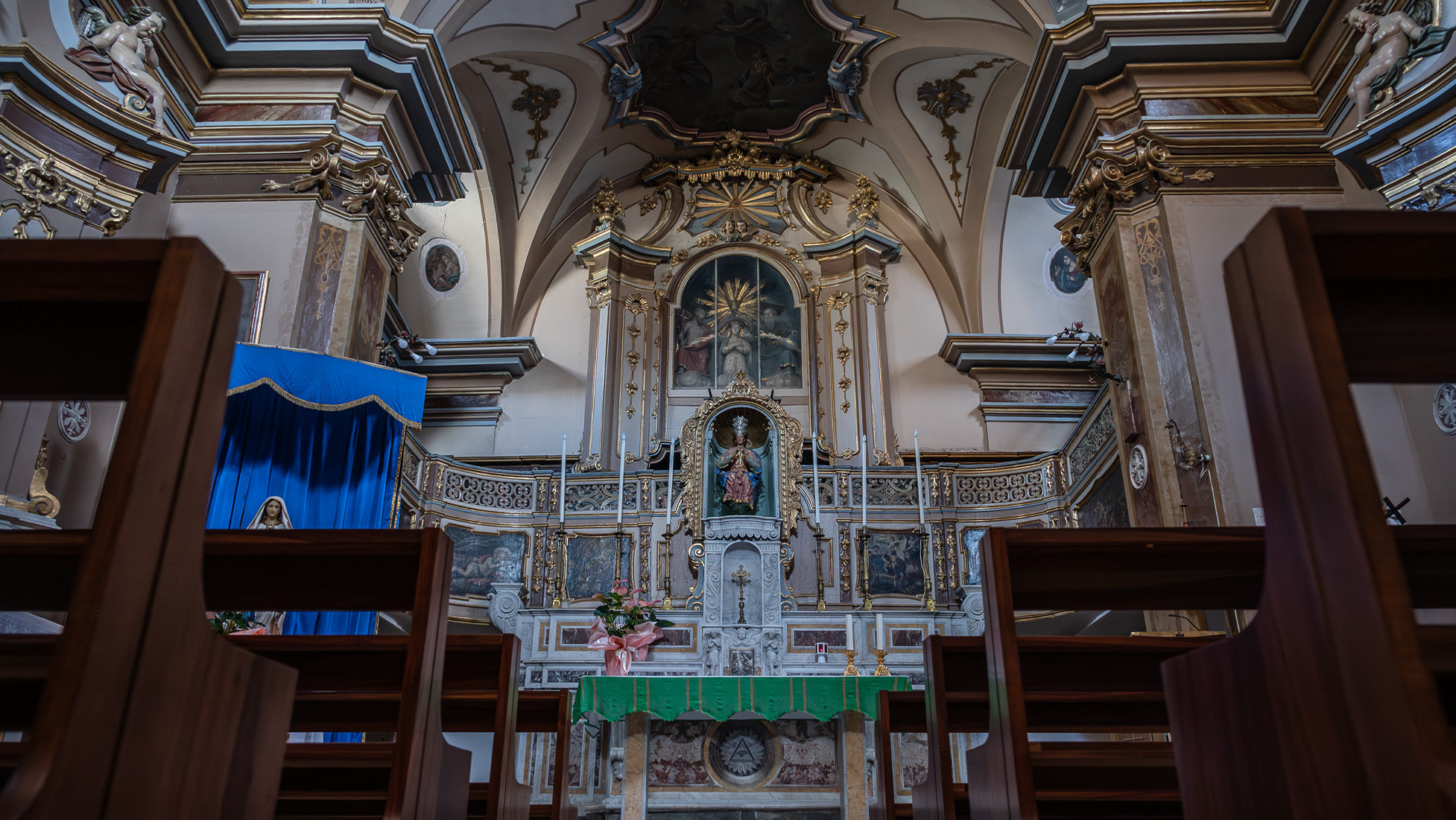Church of the Annunziata or del Carmelo
The church of the Annunziata or of Carmine was built in 1505, adjacent to the ancient convent of the Filippini Fathers, the last resting place of Saint Francesco Caracciolo, who died on 4 June 1608. It has a baroque rather than Renaissance appearance, characterized by a gabled façade divided into two sides with a cornice, and vertically with four pilasters on each side, with Doric capitals. Both the portal and the central window are in line with the axis, although very simple; the bell tower is vaulted, located on the left, and the crowning of the upper triangular architrave is serrated. The altar of the Madonna is the second on the right, and houses an eighteenth-century statue of Columbus, adorned with a crown, holding the Child in one hand and a flower in the other. The decorations of the single nave show Baroque splendour, with projecting columns adorned with golden Ionic capitals, and a mixed plaster between pink and white. The main altar shows a niche with the crowned Madonna between Jesus and a saint.
You may also like
